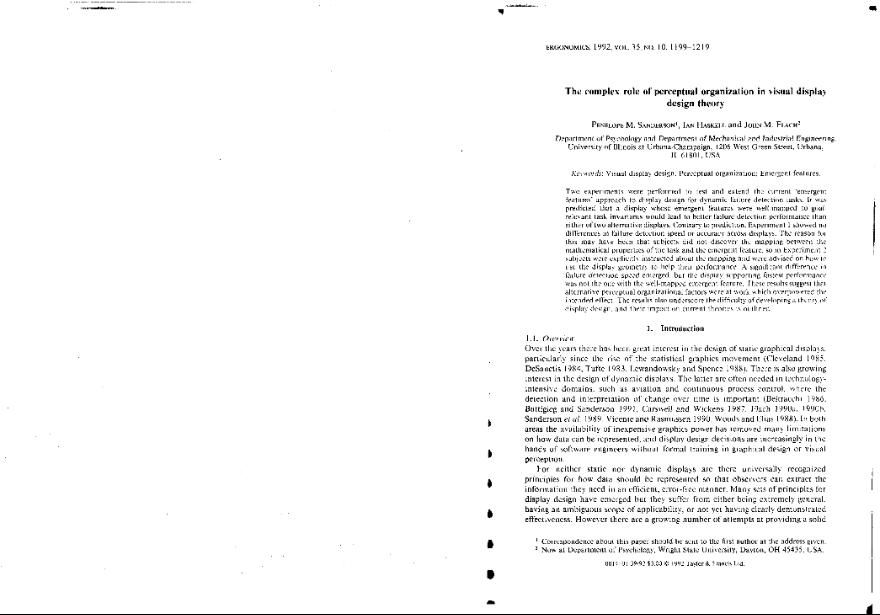The Complex role of perceptual organization in visual display design theory

Contenido multimedia no disponible por derechos de autor o por acceso restringido. Contacte con la institución para más información.
| Tag | 1 | 2 | Valor |
|---|---|---|---|
| LDR | 00000nab a2200000 i 4500 | ||
| 001 | MAP20071019198 | ||
| 003 | MAP | ||
| 005 | 20080418115719.0 | ||
| 007 | hzruuu---uuuu | ||
| 008 | 940518e19921001gbr|||| | |00010|eng d | ||
| 035 | $a6800013124 | ||
| 040 | $aMAP$bspa | ||
| 084 | $a875 | ||
| 100 | 1 | $0MAPA20080310707$aSanderson, Penelope M. | |
| 245 | 1 | 4 | $aThe Complex role of perceptual organization in visual display design theory$cPenelope M. Sanderson, Ian Haskell and John M. Flach |
| 520 | $aTwo experiments were performed to test and extend the current 'emergent features' approach to display design for dynamic failure detection tasks. The results suggest that alternative perceptual organizational factors wre at work which overpowered the intended effect. The results also underscore the difficulty of developing a theory of display design, and their impact on current theories is outlined | ||
| 650 | 1 | 1 | $0MAPA20080550653$aErgonomía |
| 650 | 1 | 1 | $0MAPA20080589844$aControl de procesos |
| 650 | 1 | 1 | $0MAPA20080603137$aProcesos industriales |
| 650 | 1 | 1 | $0MAPA20080540814$aDiseño |
| 650 | 1 | 1 | $0MAPA20080547462$aGráficos |
| 650 | 1 | 1 | $0MAPA20080608651$aSistemas automatizados |
| 650 | 1 | 1 | $0MAPA20080583514$aAnálisis de fallos |
| 700 | 1 | $0MAPA20080045111$aHaskell, Ian | |
| 700 | 1 | $0MAPA20080098261$aFlach, John M. | |
| 740 | 0 | $aErgonomics | |
| 773 | 0 | $tErgonomics$dLondon and Washington$gVol. 35, nº 10, October 1992 ; p. 1199-1219 |

